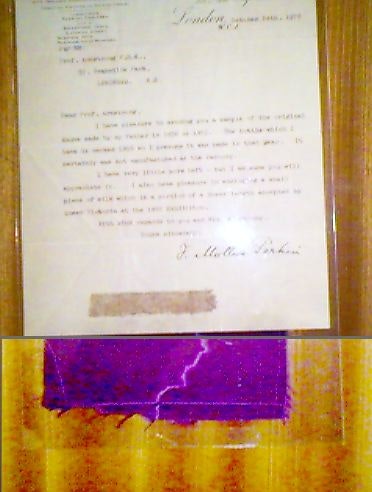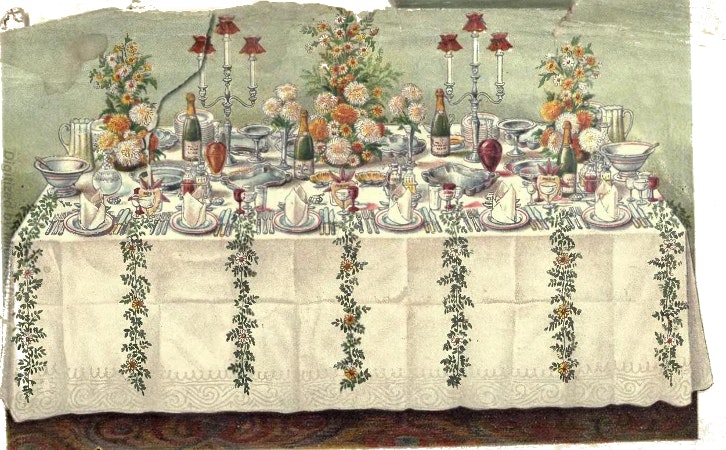A lot of important stuff happened in 19th-century England, and those major events and historical developments had an enormous impact on the 20th century. In fact, life as we know it in 2017 would look very different if Britain hadn't industrialized on an impressive scale, altered its system of government, colonized and made war all over the world, and so on. Most of us learn about the big stuff in school and then forget about it until we're watching a Victorian miniseries on Masterpiece Theatre. "Oh yeah," we say. "Yeah, that thing was happening when Dickens wrote Great Expectations." But I'm here to tell you, it's the LITTLE stuff from the 19th century that you won't forget—partly because it's just so freaky, and partly because it's so familiar. Those weird Victorians sometimes sound a little too much like us.
Better Mauveine through Chemistry
In 1856, a young chemistry student named William Henry Perkin revolutionized the textile industry by chance. While trying to synthesize a cheap version of quinine, the bark extract used to treat malaria, Perkin accidentally created the world’s first aniline dye, which he called mauveine (later shortened to mauve). This inexpensive substance produced a brilliant, lasting purple color on fabric. Perkin and other chemists soon developed other aniline dyes in different colors. Textile factories established in the Industrial Revolution could now use better and cheaper dyes to produce a whole range of bright colors.

Sample of mauveine dye on silk. Photo by Henry Rzepa, via Wikipedia.org.
Isabella Beeton Invents English Cuisine
Mrs. Beeton may rightly qualify as the world’s first lifestyle blogger. In 1861, she and her husband published a collection of recipes and a comprehensive guide to housekeeping called Mrs. Beeton’s Book of Household Management. Any middle-class Victorian lady who had problems handling her servants, her children, or her housekeeping budget could find answers in this book. It became a runaway bestseller in the 19th century and remains in print to this day.

Photo from Mrs. Beeton's Book of Household Management. Photo public domain via Wikipedia.org.
Fun facts about this book:
- Mrs. Beeton copied recipes from other cookbooks of the day and frequently printed recipes that her readers sent in. She did not credit any of these sources.
- Mrs. Beeton wrote up a recipe for a toast sandwich. It’s a slice of buttered toast between 2 slices of untoasted bread.
- Isabella died in 1865 at the age of 28. Her husband sold the rights to their book, and the subsequent publisher kept churning out revised editions. This company wanted its readers to think that Mrs. Beeton still tested recipes in her kitchen, so the new editions didn’t mention her death. Betty Crocker, a fictional woman who spent decades teaching cooking to American housewives, is the evil twin or bizarro version of Isabella Beeton.
- English food critics in the 20th century didn’t think much of Mrs. Beeton. Clarissa Dickson Wright, a celebrity chef in the 1990s, once said of her, “It would be unfair to blame any one person or one book for the decline of English cookery, but Isabella Beeton and her ubiquitous book do have a lot to answer for."
If you enjoy reading about weird Victorians, you’ll love Knitting Traditions 2017, where you can read about the Great Exhibition of 1851, the first licensed female pilot, a lady Egyptologist, novelist Sir Walter Scott, and much more!

